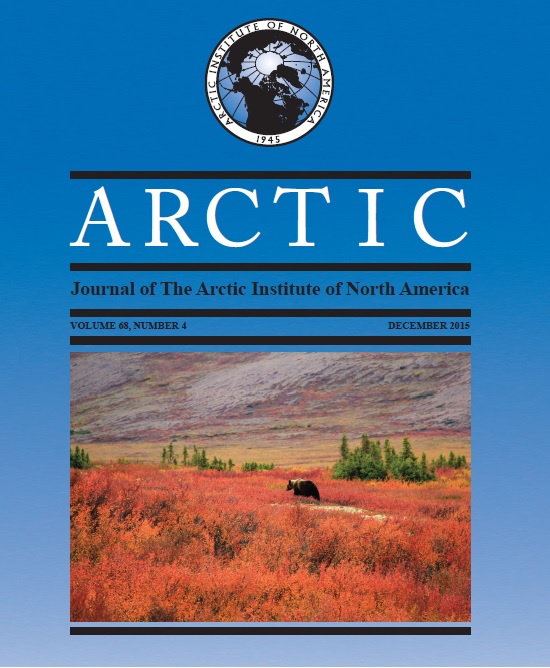What Happened to the Beverly Caribou Herd after 1994?
DOI:
https://doi.org/10.14430/arctic4523Ключевые слова:
Beverly, Ahiak, barren-ground caribou, decline, range shift, calving grounds, survival, productivity, monitoringАннотация
The Beverly herd was one of the first large migratory herds of barren-ground caribou (Rangifer tarandus groenlandicus) defined in northern Canada on the basis of annual return of breeding females to traditional calving grounds near Beverly Lake in Nunavut. In 1994, herd size was estimated at 276 000 ± 106 600 (SE) adult caribou, but monitoring was minimal from 1994 to 2007. The next calving ground survey in 2002 revealed that caribou densities had dropped by more than half since 1994; annual surveys following from 2007 to 2009 demonstrated an extreme decline in numbers of calving cows, and by 2011, no newborn calves were seen there. We examine two possible explanations for the declining use of the traditional Beverly calving grounds from 1994 until their abandonment by 2011. One explanation is that a true numerical decline in herd size occurred, driven in at least the later stages by low cow survival and poor calf productivity, which led the remaining Beverly cows to switch to the neighbouring Ahiak calving ground 250 km to the north in 2007 – 09 and join that herd. An alternative explanation is that the decline on the traditional Beverly calving grounds was largely due to a distributional shift to the north of the Beverly herd that may have begun in the mid-1990s. We suggest that the former explanation is the more likely and that the Beverly herd no longer exists as a distinct herd. We acknowledge that gaps in monitoring of Beverly and Ahiak caribou hamper definitive evaluation of the Beverly herd’s fate. The large size sometimes achieved by barren-ground caribou herds is not a guarantee of persistence; monitoring shortfalls may hamper management actions to address declines.Загрузки
Опубликован
2015-12-03
Выпуск
Раздел
Articles


